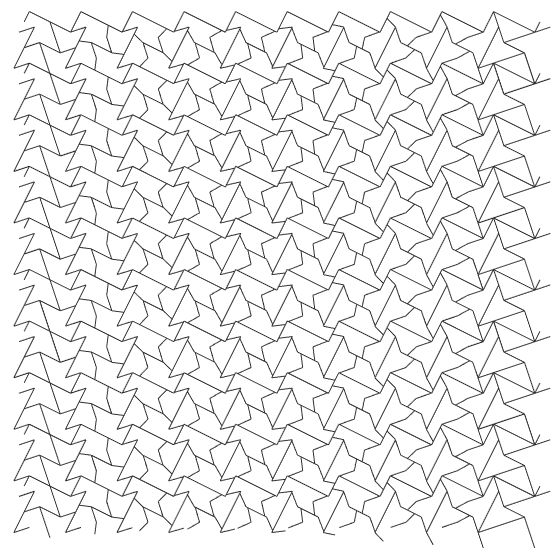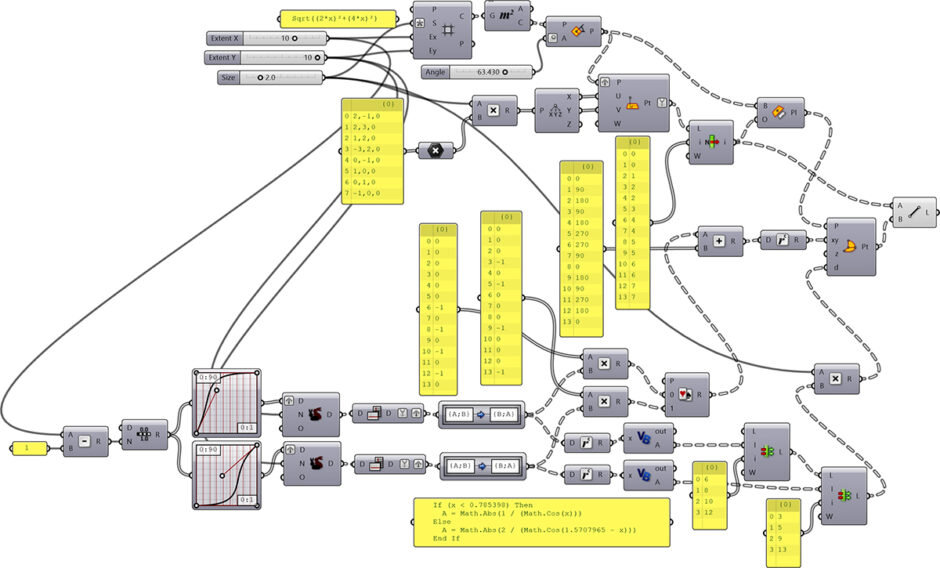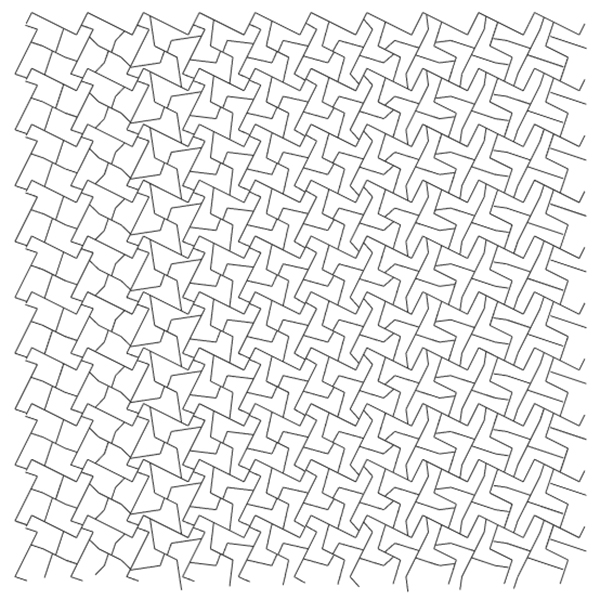Crossover Parquet Deformation
by Tuğrul Yazar | August 20, 2013 13:52
It has been a while since I didn’t post any patterns. Here is a beautiful one from the iconic design studio of William Huff[1]. Crossover Parquet Deformation is a single-axis, line-based deformation algorithm, constructed on a regular quadrangular hyperframe, designed by Richard Lane at the Basic Design studio of William Huff in 1963. It presents two different parquet deformation[2] sequences linked together. Thus, the designer created a transition between the borders and inner cross-shapes gradually. This transition is visually smooth and interesting because of the component shift in the middle. It does not include polygonal components as seen at first sight but works with a sequence of point and line orientations instead. This liberation from the traditional understanding of polygonal component logic allows designers to manipulate and de-construct the system easily to re-construct again in a different fashion.

This Grasshopper definition re-generates the Crossover Parquet Deformation along with its variations. The inputs are the size of the lattice (grid) and the two Graph Mappers that control the generation. Thus, you can generate infinite variations of this pattern deformation. The output of the definition is a set of lines of the pattern deformation. You can reverse-engineer the definition and learn a lot about the data-matching procedures of Grasshopper. The output is ready for further investigation and development.

You can rebuild the Grasshopper definition by checking the diagram on this page. I used native Grasshopper components while developing this design. Thus, you don’t need any add-on to run it. However, if you like my content and want to support me, please consider being one of my Patreons. Here is the link to my Patreon page[3], including my working Grasshopper file for Crossover Parquet Deformation and more. Thank you.

- William Huff: https://www.memphis.edu/amum/collections/williamhuff.php
- parquet deformation: https://www.designcoding.net/category/research/pattern-deformations/
- Patreon page: https://www.patreon.com/Designcoding
Source URL: https://www.designcoding.net/crossover-parquet-deformation/